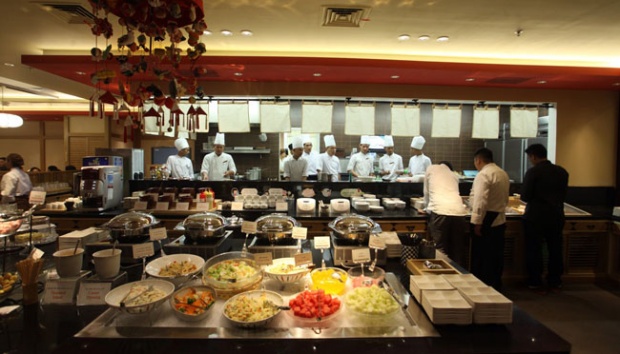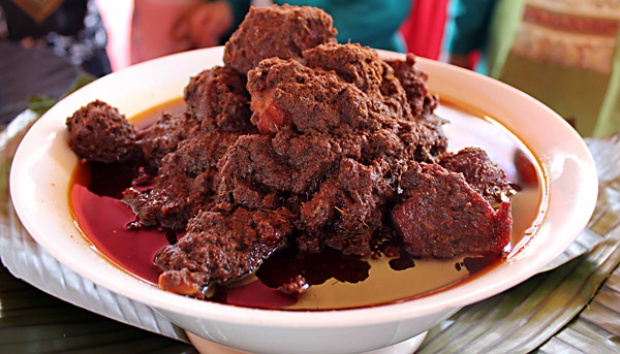
TEMPO.CO, Jakarta - The array of kimchi was neatly laid out, enticing the foodies’ taste buds despite their unassuming appearance. One dish, however, stood out from the better known variant of napa cabbage and red pepper.
Fermented for three weeks at a constant temperature of 10 degrees Celsius in accordance with an age-old Korean process, the white kimchi bears a subtly rich taste balanced by black sesame seeds which gives it a more full flavor and texture. Its accompanying appetizer, the prawn salad with pine sauce, equally has its share of the unexpected. The pine sauce gave the prawn a tangy flavor.
On the other hand, the panfried burdock with sticky rice looks similar to dim sum, such as hakau. But the plant has a savory flavor that is as distinctive as it is long lasting, not least because of the sticky rice’s texture.
These world renowned appetizers are part of “The Captivating of Korean Dishes”, a promotion of the country’s foods at Jakarta’s Gran Melia Hotel. Held in cooperation with the Korean Agro-Fisheries and Food Trade Corporation as well as the Institute of Traditional Korean Food, the event is part of their joint program in teaching restaurateurs the finer points of Korean cuisine.
The program parallels the increasing popularity of Korean cuisine — particularly after kimchi was named number 12 in a CNN list of the world’s 50 best foods.
“The Korean foods featured [in ‘The Captivating of Korean Dishes’] are more geared to the buffets of five star hotels. The foods in the promotion are also highlighted by its presentation and garnishing,” says president of the Institute of Traditional Korean Food Sook-Ja Yoon, an eminent expert in Korean cuisine who consulted Korean restaurants in London, New York and Paris on the finer points of the country’s cuisine.
“The dishes particularly emphasize the balance of meats, seafood and vegetables that define Korean food. They also highlight its balance of nutrition and health benefits,” adds Sook, a professor in Traditional Cuisine at Baewha Women’s College and author of over 50 books on Korean cuisine, including “The Beauty of Korean Food,” “Good Morning Kimchi” and “Korean Foods in Season.”
Sook’s deft touch, which he passed on to fellow chefs Hee-sook Kim and Young-woo Jung, is evident in his main dishes, like fish bun and hanchi squid glass noodle. While it would be a natural reaction to disregard a ubiquitous bowl of noodles, the Hanci squid is enough to make one think twice; the crustacean is full-bodied and deliciously chewy.
Meanwhile, the grilled flat beef and natural mushroom derives its distinctive flavor from the contrasting yet complimentary melange of its ingredients.
“The dishes, as well as the steamed tofu and chicken and other recipes, was chosen because their range and unexpected flavors will take diners by surprise. After all, the foods vary from traditional staples to the royal cuisine of Korea’s monarchs,” says Ratna Sjamsiar Idris, Gran Melia Hotel’s director of marketing and communications. On the other hand, the black sesame porridge, or heukmija jook, has a fleeting yet savory flavor. A breakfast staple that’s particularly favored in cold weather, the dish has a following due to its simple cooking process and nutritional value.
The surprises don’t end there. Diners can also go for the parboiled sliced fish fillet or eochae. The traditional concoction of fish, cucumbers, paprika, mushroom and chili is perhaps the ultimate in flavor and appearance. The dish’s eye-catching, multi-colored appearance is calculated to whet the appetite through the eyes.
The Plate of Nine Delicacies, or guejeolpan, bears some similarities to the Indonesian rijsstaffel. Made up of nine different dishes in a wooden pan, guejeolpan was a royal delicacy that was believed to bring luck to Korean monarchs.
Last but not least, the culinary spectacle is capped off in a distinctively Korean manner with the carameled sesame. While the dessert seems similar to baklava, it’s distinctively different from the Central Asian dessert’s use of filo pastry, pistachio and honey. Carameled sesame is made of dried sesame and mixed with syrup.
Diners can also opt for the apple ball, a dish made distinct by its use of hongok or yangkwang apples. Harvested during the fall to make the most of its sweetness, the apple ball’s distinct flavor is sure to make a distinctive dessert.
JG | TUNGGUL WIRAJUDA























